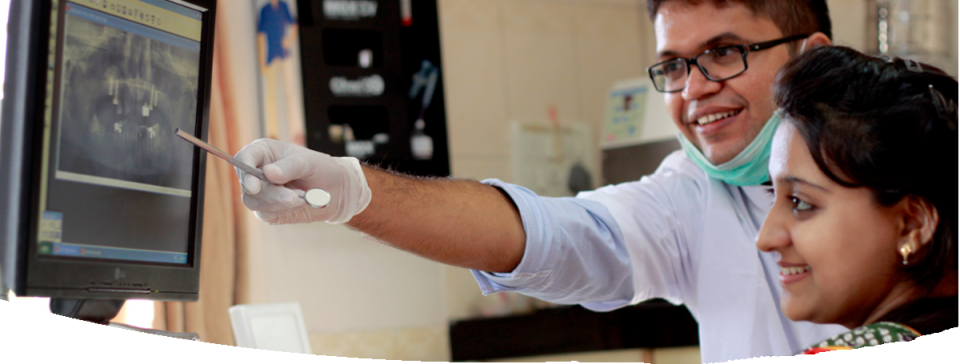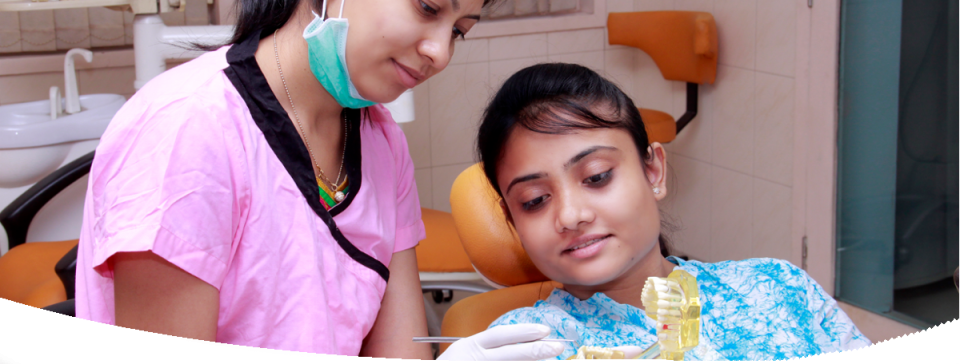Generally, in children or teenagers, an Orthodontic Treatment generally gives good result as compared to adults. This treatment will straighten up the teeth and set them in proper position in mouth so that it doesn’t look ugly. Dr Ajay shah, who has a vast experience of 30 years is giving his services to Bhavna Dental Clinic.


Do I Need Braces?
A dentist usually recommends braces to improve the patient’s physical “orofacial” appearance. Through orthodontic treatment, problems like crooked or crowded teeth, overbites, underbites, incorrect jaw position and disorders of the jaw joints are corrected.
When’s the Right Time for Braces?
Patients with orthodontic problems can benefit from treatment at nearly any age. An ideal time for placement of braces is between 10 and 14 years of age, while the head and mouth are still growing and teeth are more conducive to straightening. However, more and more adults are also wearing braces to correct minor problems and to improve their smiles.
What Kind of Braces will I Have to Wear?
Your dentist will know what appliance is best for your particular problem, but the patient often has a choice. Braces generally come in three varieties. The most popular types are brackets, metal or plastic that are bonded to teeth and are far less noticeable. The “lingual” type of braces consists of brackets that attach to the back of the teeth, hidden from view. Bands are the traditional type that cover most of your teeth with metal bands that wrap around the teeth. All use wires to move the teeth to the desired position.
How Long will I Have To Wear Them?
That depends upon your treatment plan. The more complicated your spacing or bite problem is and the older you are, the longer the period of treatment, usually. Most patients can count on wearing full braces between 18 and 30 months, followed by the wearing of a retainer for at least a few months to up to two years to set and align tissues surrounding straightened teeth. Some patients may have to wear a permanent retainer if you do not want your bite to return to the way it was.
Will The Treatment be Uncomfortable?
The interconnecting wires are tightened at each visit, bearing mild pressure on the brackets or bands to shift teeth or jaws, gradually into a desired position. Your teeth and jaws may feel slightly sore after each visit, but the discomfort is brief. Keep in mind also that some teeth may need to be extracted to make room for teeth being shifted with braces and for proper jaw alignment.
Who will Provide My Orthodontic Treatment?
Your family general dentist is responsible for coordinating your dental treatment, and this could encompass any orthodontic treatment plan including diagnosis, examinations and some orthodontic procedures. Your dentist may, however, refer you to an “orthodontist”—a specialist, trained in the development, prevention and correction of irregularities of the teeth, bite and jaws and related facial abnormalities.








